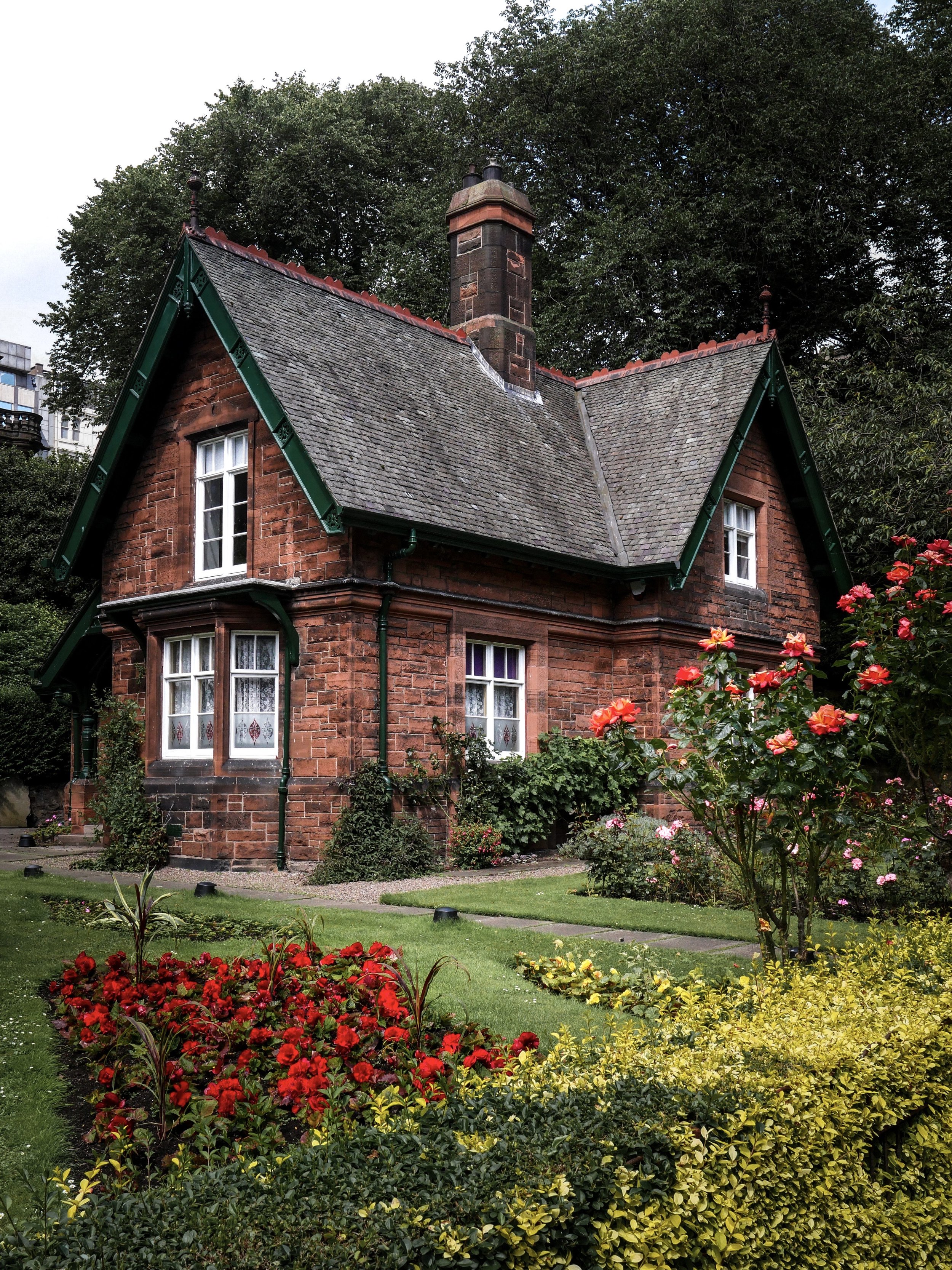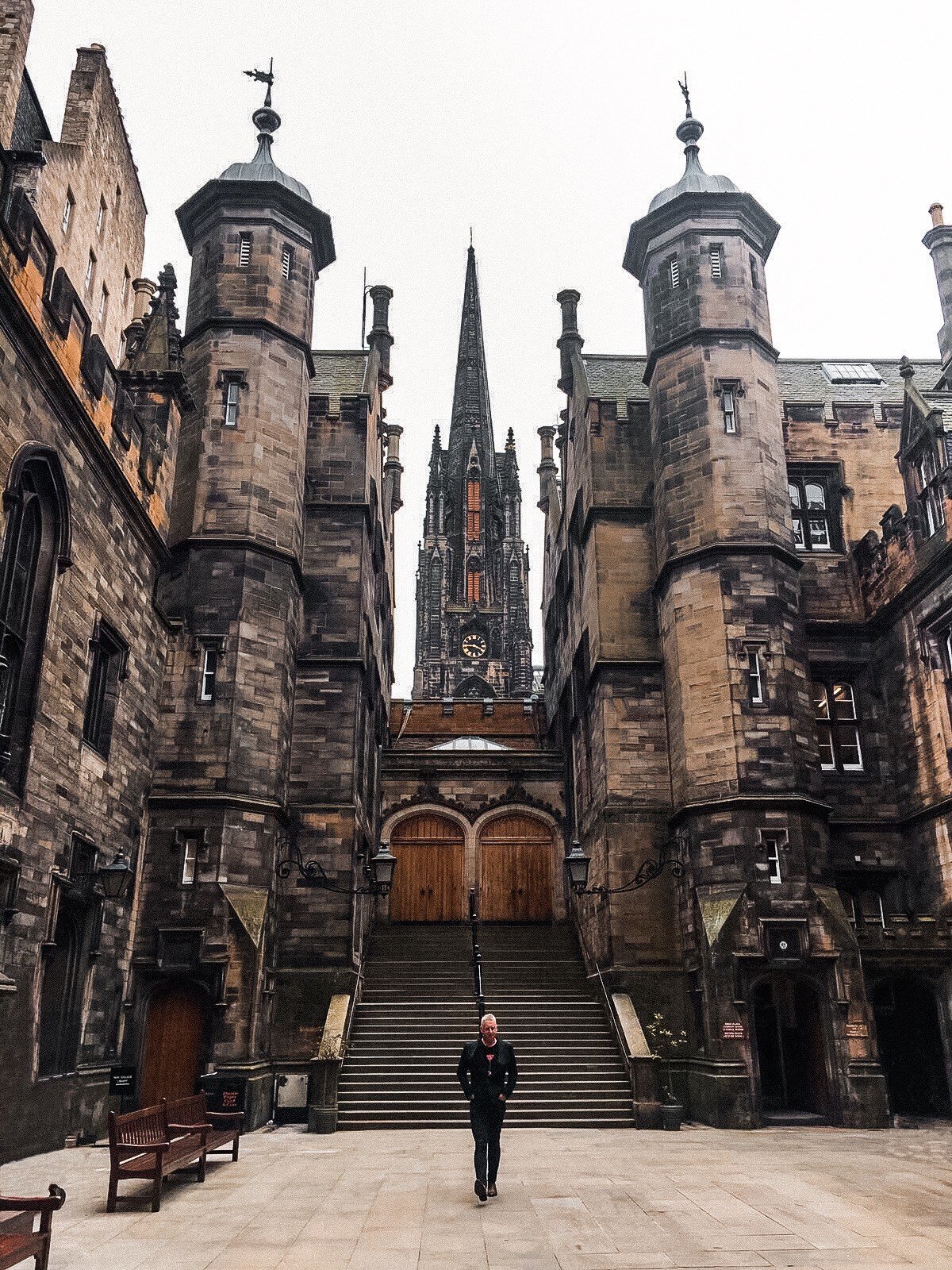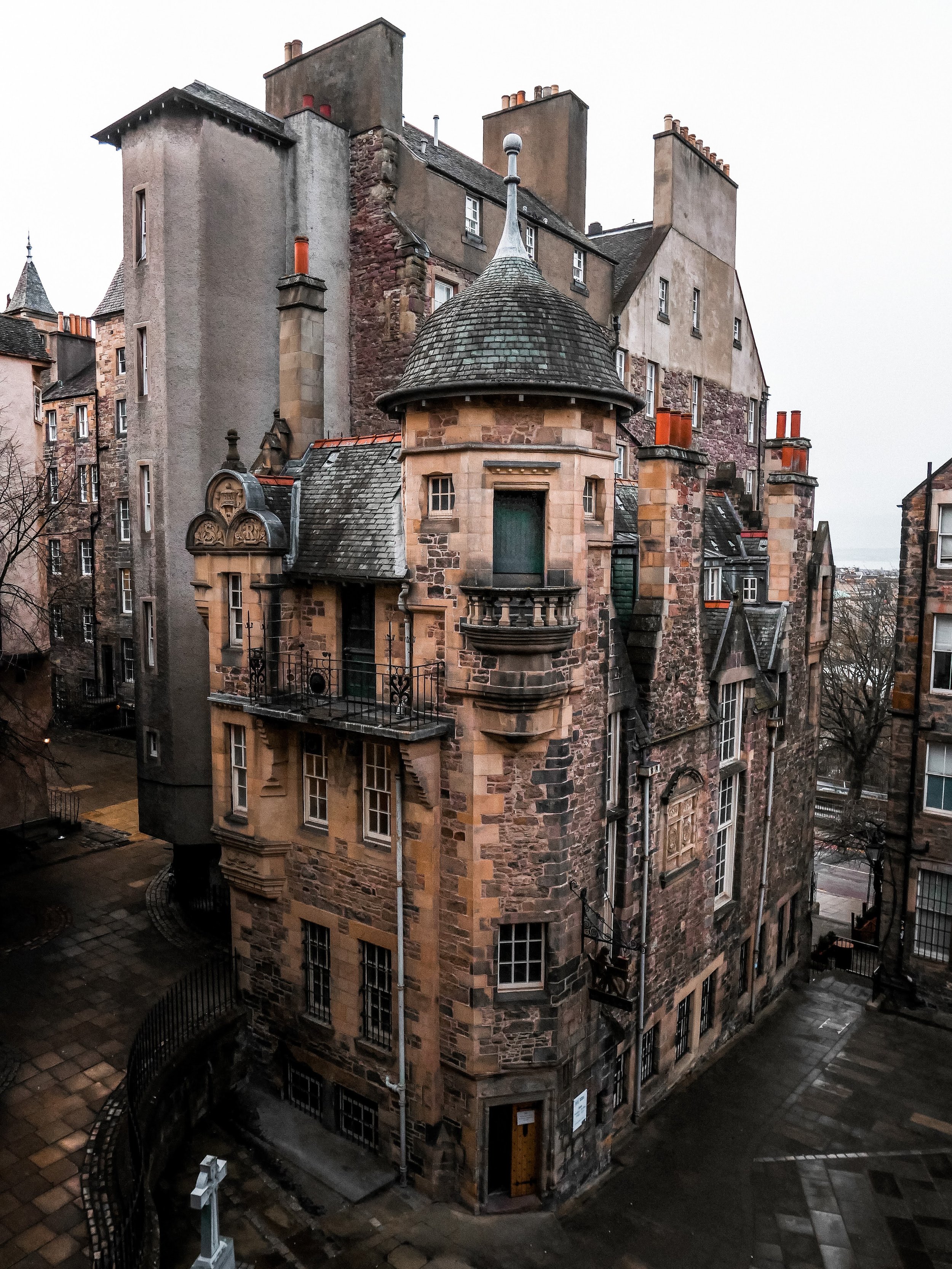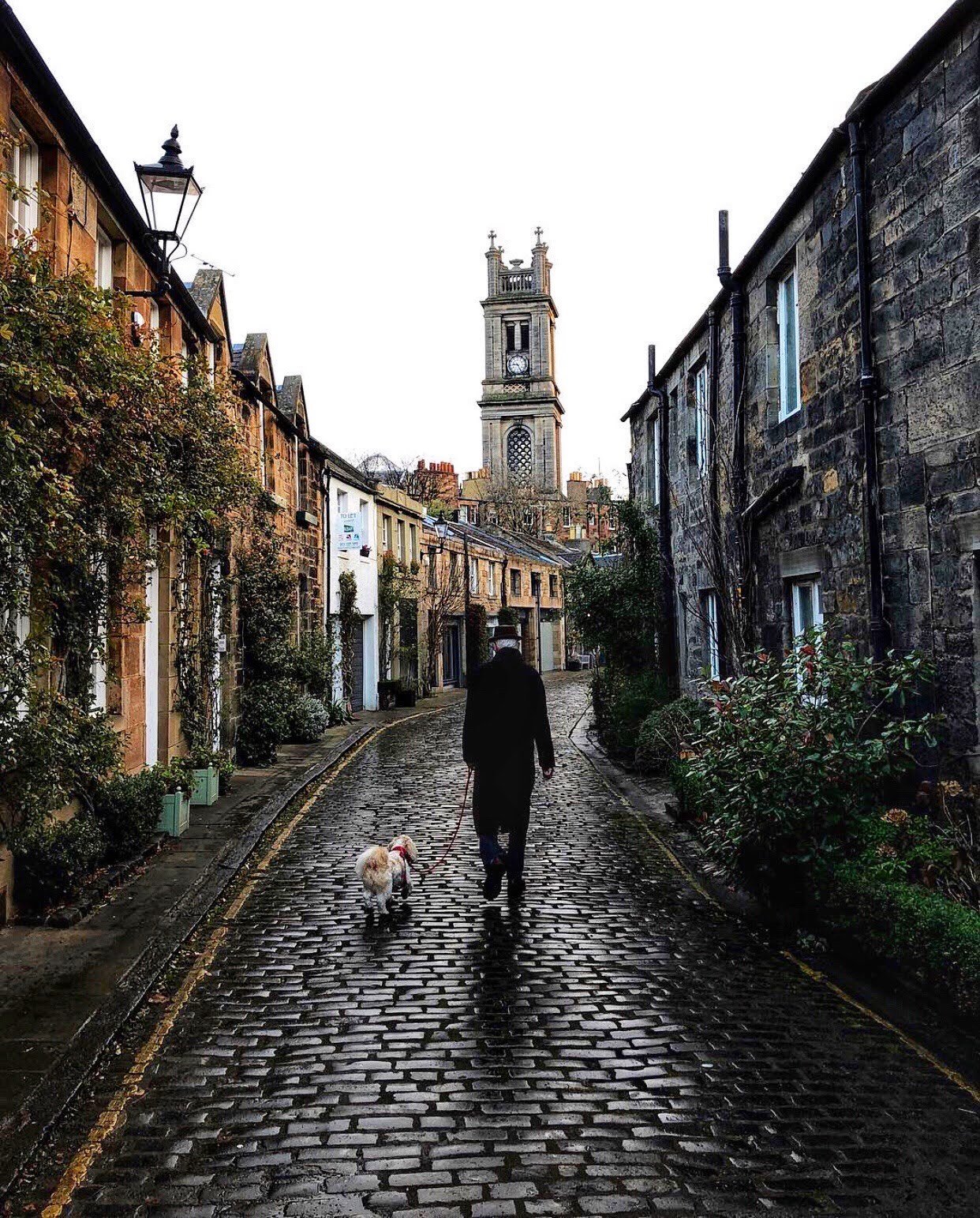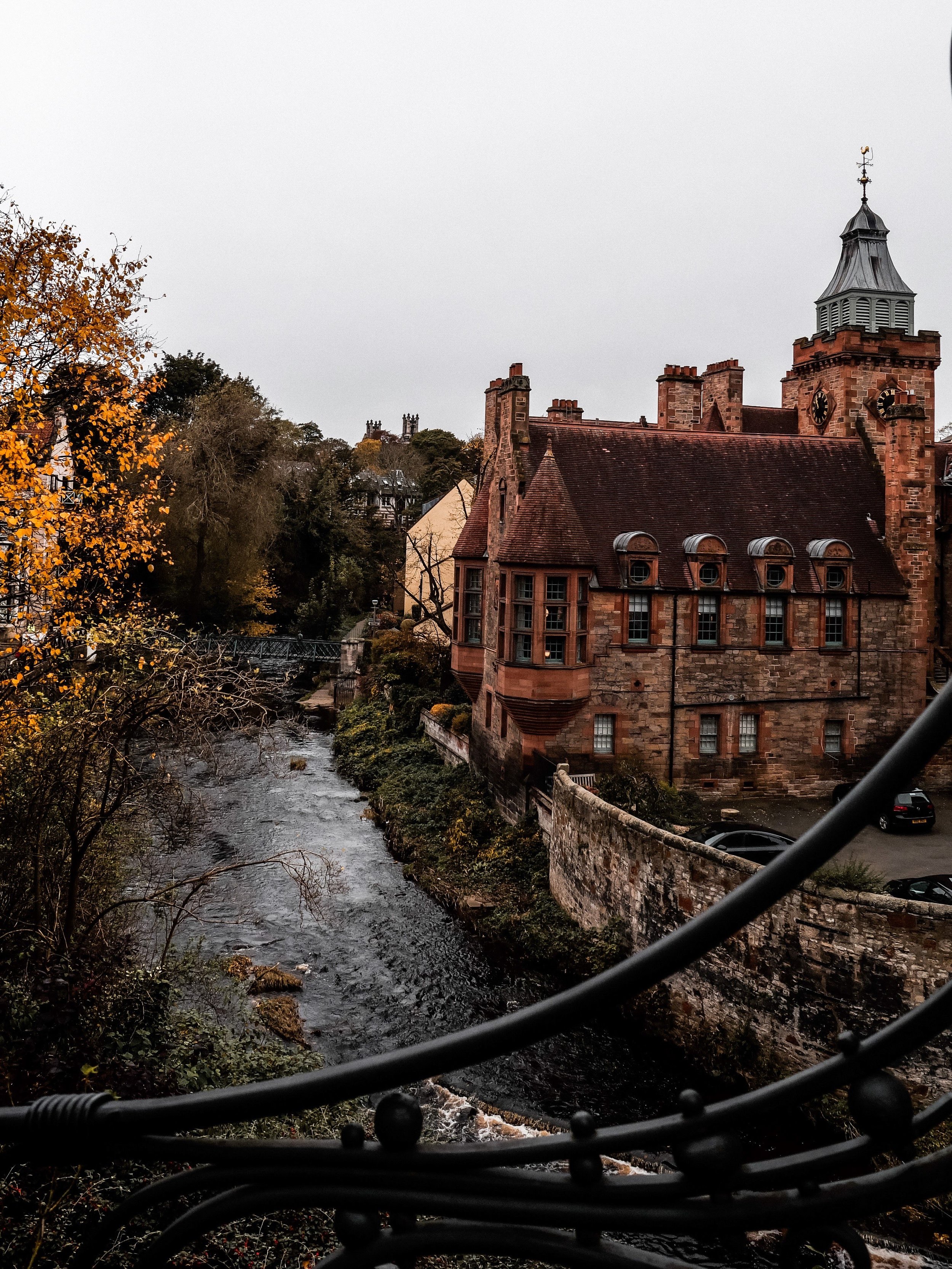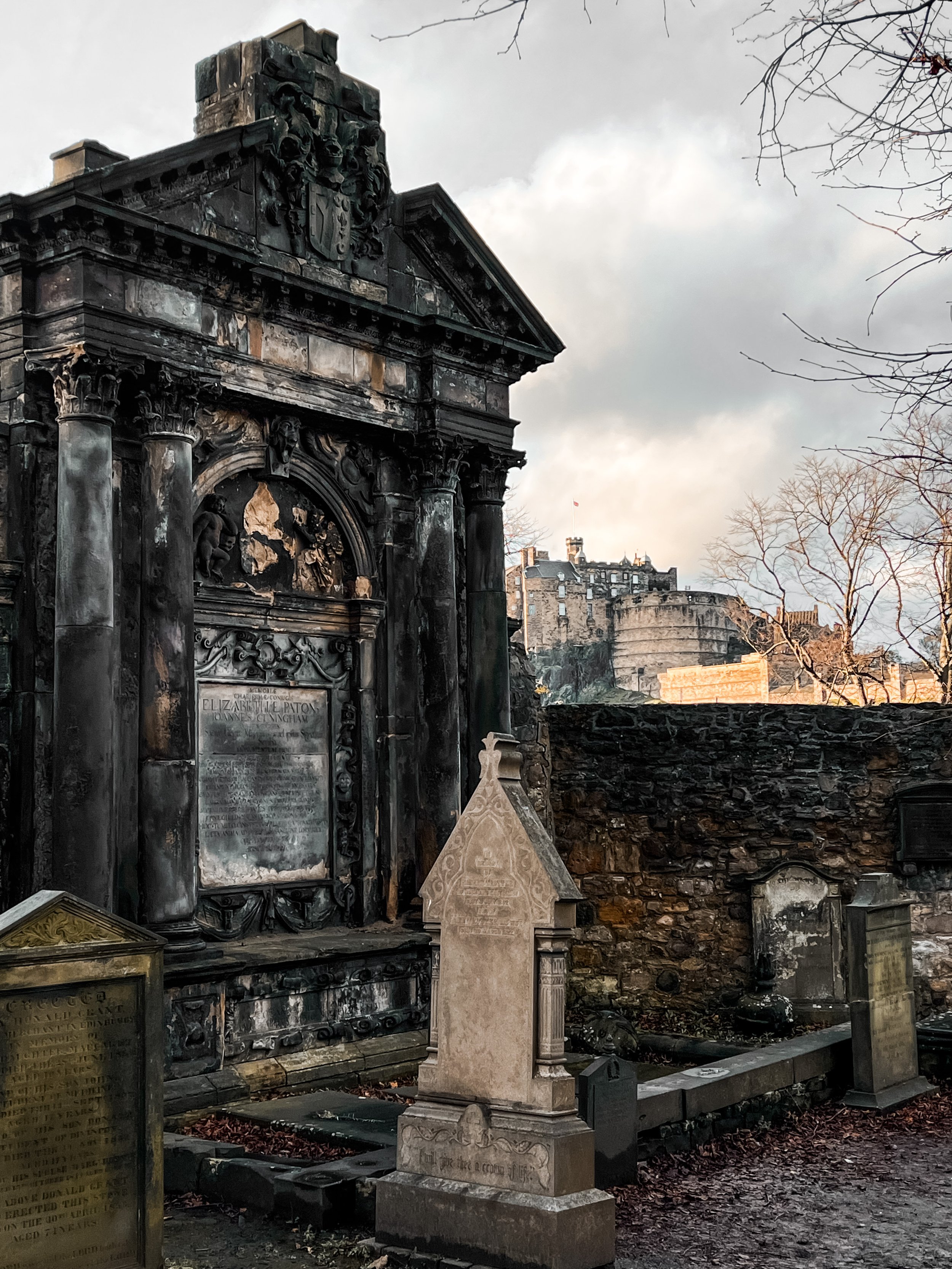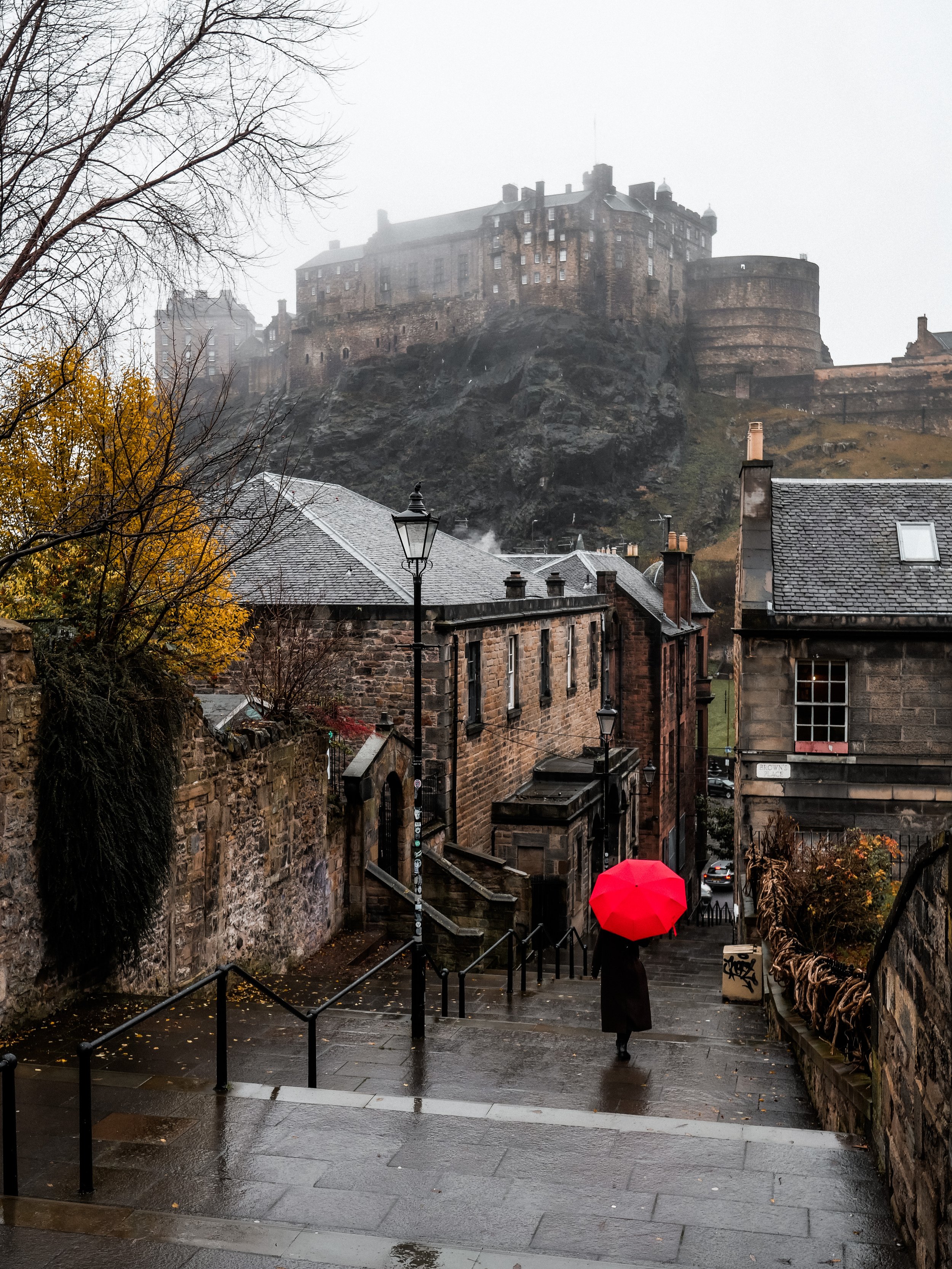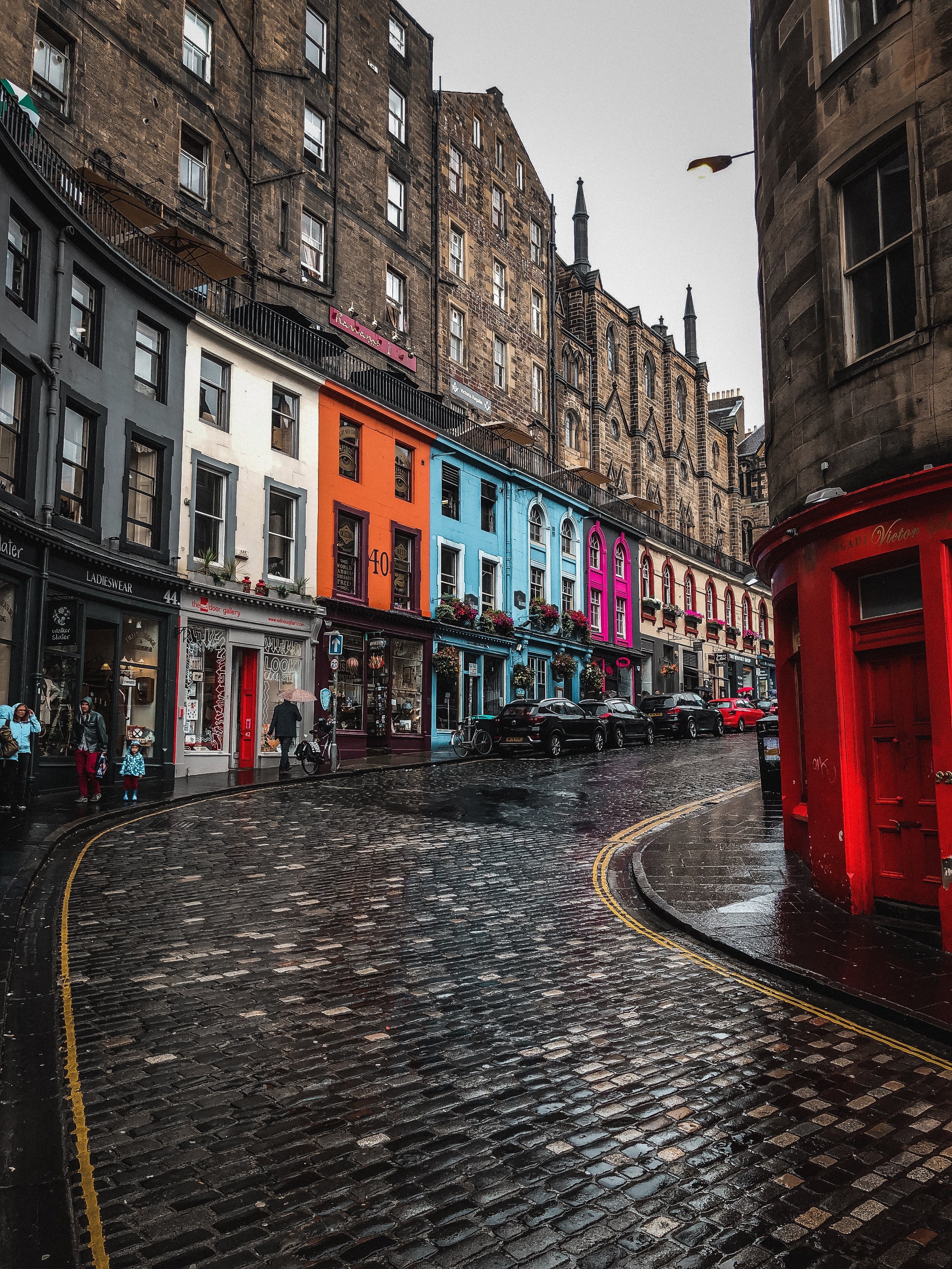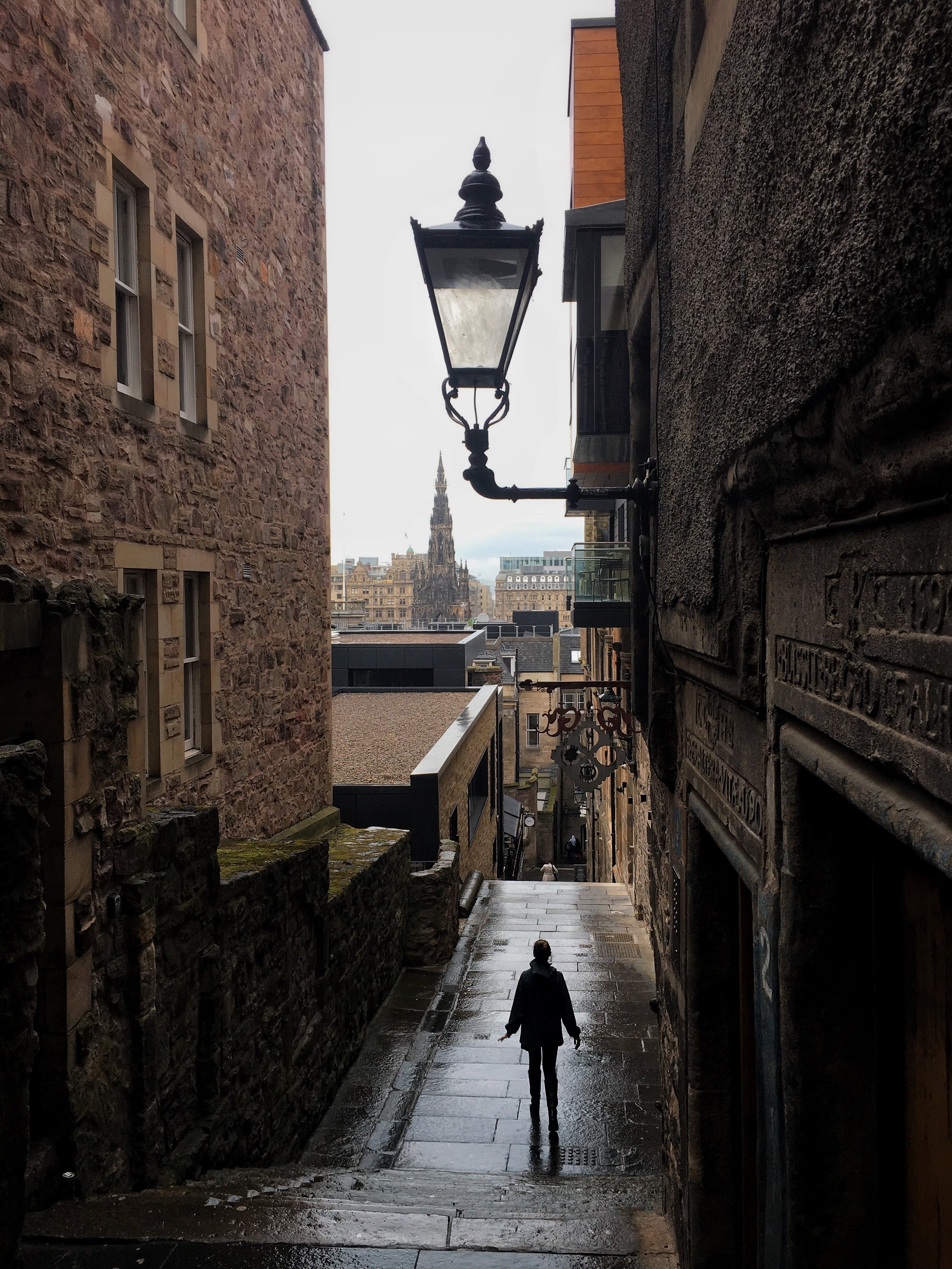10 Must See Locations in Edinburgh
Edinburgh is a fascinating city full of history, incredible architecture, and stunning views. There are so many Insta worthy spots to visit within a small geographic area. It is easy to get around the city by foot and you can take in a lot of sights in a short period of time. I’ve put together a list of my favorite locations in Edinburgh that are not to be missed.
Calton Hill – this is arguably the best aerial view of the city, where on a clear day you can see for miles. The stairs to climb the Hill are located at the east end of Princes Street and it is an easy hike to the top. It is best known for sunset photos, but any time of day is good for a visit. If you look to the left, you can see Old Town and Edinburgh Castle and if you look to the right, New Town and the stunning Georgian and Victorian homes are laid out in all their splendor while right below you is the Clock Tower on the Balmoral Hotel. The collection of monuments on top of the hill are known as the Athens of the North since the Graeco/Roman architecture was inspired by the Parthenon. To get an even higher view over the city you can also climb the 170 steps of Nelson’s Monument.
Princes Street Gardens – this beautiful oasis in the middle of the city was once a lake (or loch) that was used as a defense for the Castle and as a spot to perform executions by drowning. The loch was drained in the early 1800’s to relieve the crowded capacity in the Old Town and the resulting shallow depression was transformed into the gardens. They are split into two sections separated by the Mound on which the National Gallery of Scotland and the Royal Scottish Academy sit. On a sunny day, all of Edinburgh comes out to have a picnic, meet friends, go for a coffee, and relax in the beautiful surroundings. During your visit here, make sure to see the recently restored Ross Fountain which sits under the towering Edinburgh Castle. Another popular stop is the Gardener’s Cottage which was built in 1876. You can’t miss the imposing Scott Monument which can be accessed from the gardens. It is the world’s largest monument dedicated to a writer, Sir Walter Scott. You can buy a ticket to climb the 200 narrow steps for a bird’s eye view from the top. If you want another great angle on Edinburgh Castle, check out St. Cuthbert’s Churchyard which is located at the foot of Castle Rock.
The Royal Mile – is the backbone of Old Town. This succession of streets runs from Edinburgh Castle all the way to Holyrood Palace and used to be the traditional processional route of the monarchs. It is actually one Scots mile in length which is equivalent to 1.81 kms long. It is the busiest tourist street in Old Town, and you will find large crowds whenever you visit. Key sites to visit on this street include John Knox’s House where the Protestant reformer was reputed to live in the 16th century; the Old Tolbooth which served as a municipal building, jail and place of execution starting from the 14th century; and of course the famous World’s End pub which has been in operation for over 400 years. Another must see site is St. Giles Cathedral which was founded in the twelfth century and John Knox served as its first Protestant minister after the Reformation. As you wander the Royal Mile you may see many small “closes” leading off the main street. These steep alleyways were an artery that served the tall tenements located off the Mile. One of the oldest is Advocates Close which leads down to Market Street. If you look on the lintel above the close, you will see the date of 1590. Mary King’s Close is a series of underground streets that were buried for over 200 years but can now be accessed on a tour. Take note though, this close is said to be haunted. Edinburgh’s oldest tourist attraction is Camera Obscura located on Castlehill. It features the best rooftop view of the city, and its five floors offer some interesting exhibits which will provide hours of entertainment for all ages.
Edinburgh Castle – is the number one tourist attraction in Scotland. This mighty fortress stands upon Castle Rock at the end of the Royal Mile. There have been inhabitants on this rock since the Iron Age and a castle has stood here since the 12th century. The castle is the site of the famous Royal Edinburgh Military Tattoo which takes place every year in August. Edinburgh Castle has a fascinating history as the most besieged location in all Great Britain. Many of the original buildings were destroyed in the 16th century however, St. Margaret’s Chapel which has stood since the 12th century survived and is the oldest building in Edinburgh. The One O’clock gun is fired from the battlements every day at 1 pm (except for Sundays and holidays) as a time signal for ships in the harbor of Leith and the Firth of Forth. The Castle is the host to fantastic fireworks display on Hogmanay (New Year’s Eve) and at the end of the Edinburgh Festival in the summertime.
Victoria Street – is arguably one of the most photographed streets in Edinburgh so be sure to pay it a visit. This steep, curving street runs from the Grassmarket up to George IV Bridge and is the home of many colorfully painted shops and restaurants. In fact, Victoria Street is said to be JK Rowling’s inspiration for Diagon Alley. Victoria Terrace, which can be accessed from two separate locations, gives you a great viewpoint of George Heriot School and the bustle of tourists in the street below. From the terrace you can walk up Upper Bow Street to quickly get to the Royal Mile. The Museum of Context which sells lots of Harry Potter memorabilia is always a popular place to visit. Be sure to check out some of the upscale clothing goods stores such as Walker Slater while in the area.
The Grassmarket – this infamous square had quite a colorful history before it became a mecca for tourists. This area was once a bustling marketplace with pens for horses and cattle and other trade goods. The livestock would be driven into the city via the Cowgate at the far end of the Grassmarket. During the 1600’s, the area became a place of public execution and you can see the memorial plaque where the gibbet used to stand. Maggie Dickson’s Pub is named after the lady who was hanged in 1724, presumed dead but later woke up very much alive as her coffin was being transported out of town. The White Hart Inn is the oldest pub in Edinburgh being in business since the early 18th century. Robert Burns, the great Scottish poet visited the Inn in the mid 1700’s as well as the infamous grave robbers Burke and Hare. This area used to be very poor, housing lots of Irish immigrants in slum dwellings. Today it features upscale hotels, historic pubs, a weekly farmer’s market, and several shops. The Grassmarket also boasts some incredible views of Edinburgh Castle from the ground level and from the Vennel Steps located near to Westport.
Greyfriars Kirkyard (graveyard) – is arguably one of the most famous graveyards in the world and offers many tours. Burials have been taking place here since the 16th century and it was named after the grey robes of the Franciscan friars that lived on site. Greyfriars Bobby is one reason to pay a visit to this location. Bobby is the Skye Terrier that guarded his master’s grave for 14 years and he has his own headstone just inside the entrance. The statue of Bobby is located outside the pub of the same name at the junction of George IV Bridge and Candlemaker Row. Harry Potter fans like to flock to the graveyard to trace the steps of JK Rowling as she searched for names of characters while writing her first book at the Elephant House Café. Here you can find the grave of Tom Riddle, William McGonagall and others. In addition, the entire Kirkyard is rumoured to have been the inspiration behind the resting place of Harry’s parents – the eerie and beautiful graveyard in Godric’s Hollow. The graveyard also features two examples of mortsafes – iron cages that were used to protect the newly dead from graverobbers who were supplying them to the Edinburgh Medical College for dissection by the students.
Dean Village – a short walk from Princes Street brings you to this hidden gem. Dean Village is one of the oldest villages outside the Royal Burgh of Edinburgh showing up in records as early as 1145. Its name means ‘deep valley’ and it is situated along the Water of Leith. That proximity made it a perfect spot for grain milling and there were no fewer than 11 mills in the area over the 800-year span of its popularity. The area started to decline in the 18th century and the building of the Dean Bridge by Thomas Telford in 1833 allowed traffic to bypass the village altogether. However, in the 1970’s, this area became recognized for the tranquil oasis that it is today, and redevelopment started to bring it back to life. Now the old mills have become a desirable residential area and a must-see destination for tourists.
Stockbridge – located just a short walk beyond New Town and close to Dean Village lies the charming area of Stockbridge. Here you will find Circus Lane, one of the most Instagrammed streets in Edinburgh. It is a small cobblestoned street with colorful garages and flower covered mews houses. This area used to house the stables and workers for rich families from New Town. Today, it is a bustling neighborhood of independent shops, restaurants, coffee bars and galleries. On St Stephen Place you can see the original archway which once led to the old Stockbridge Market. There is a farmer’s market every Sunday where you can buy fresh produce, baked goods, or hot food. Another famous location to photograph is the Potted Garden located at Circus Place. This small staircase adorned with dozens of colorful flowers has become an instant favorite. Best to visit this spot in spring and summer. In between Stockbridge and Dean Village on the water of Leith path, lies St. Bernard’s Well which was discovered in 1760. The Greek goddess of Hygiea sits under the domed roof of this monument. Locals believed the water had magical healing powers and it became a destination for travelers from all over Europe.
The Writer’s Museum – located in Lady Stair’s Close this museum is easily accessed from the Royal Mile or from the Mound. The museum highlights the works of three of Scotland’s famous writers: Robert Burns, Sir Walter Scott and Robert Louis Stevenson. Inside you will find portraits, rare books, and personal objects such as Robbie Burns’ writing desk and a printing press used to print Sir Walter Scott’s Waverley novels. The museum is free to enter, and you must have a wander around Makar’s Court while you are there. It features inscribed flagstones which celebrate Scottish writers from the 14th century up to the present day. Once you are done at the Museum, head down the Mound to New College just a short walk away which houses the School of Divinity. New College opened its doors in 1835 and the impressive architecture is worth a few photos.
Bonus stop – Cockburn Street. If you have made it through this list of 10 places and still have some time left, I encourage you to visit Cockburn Street which runs from the Royal Mile down to Market Street and Waverley Station. This steep curving street built in 1859 has access to some old closes including the Fleshmarket Close featuring Edinburgh’s smallest pub. If your legs need a workout try climbing up Warriston Close which leads from the bottom of Cockburn Street up to the Royal Mile. After all that exercise, relax with a cup of coffee at vibrant spots like the Milkman which has two locations on Cockburn Street or The Wall Edinburgh.
Enjoy your time in Edinburgh, where you will quickly discover why it is a tourist favorite that keeps people coming back year after year.

